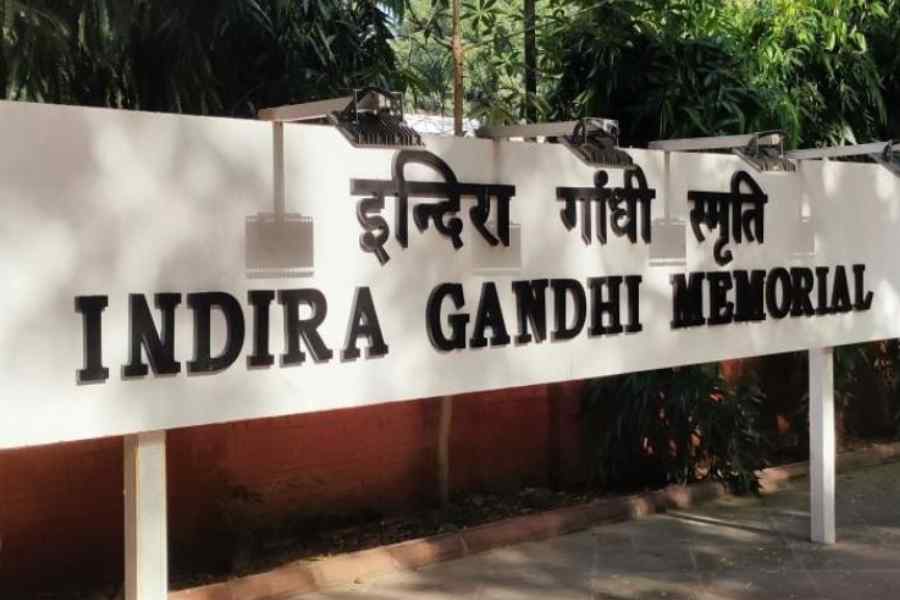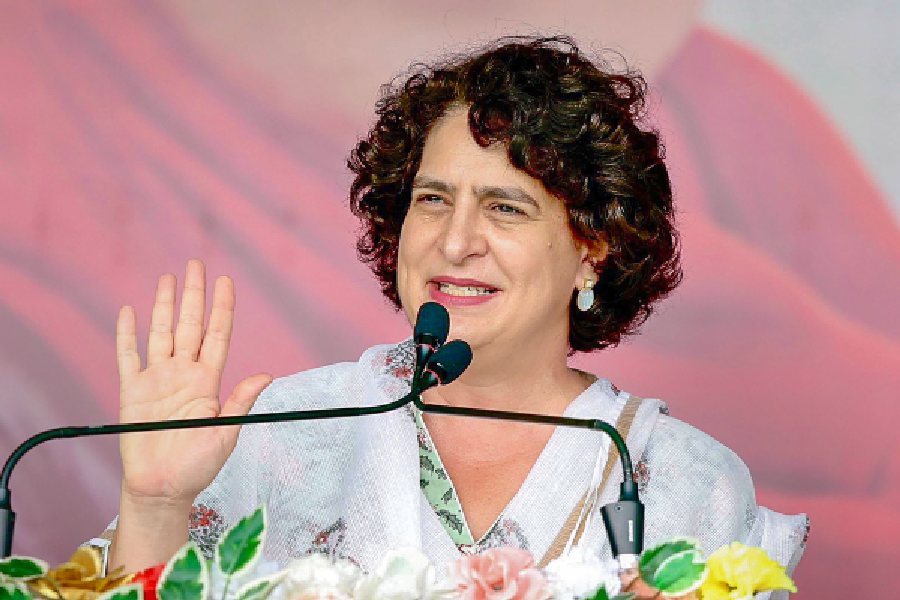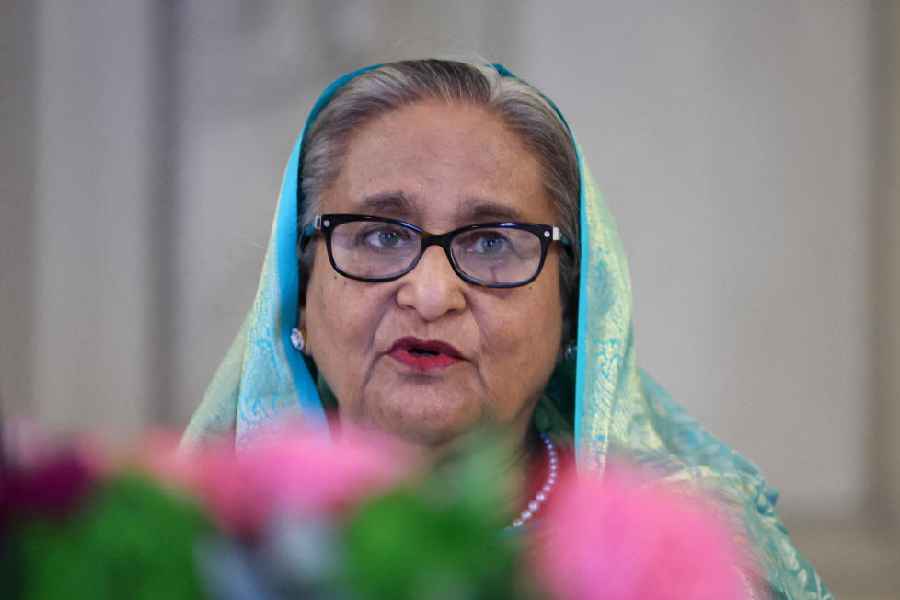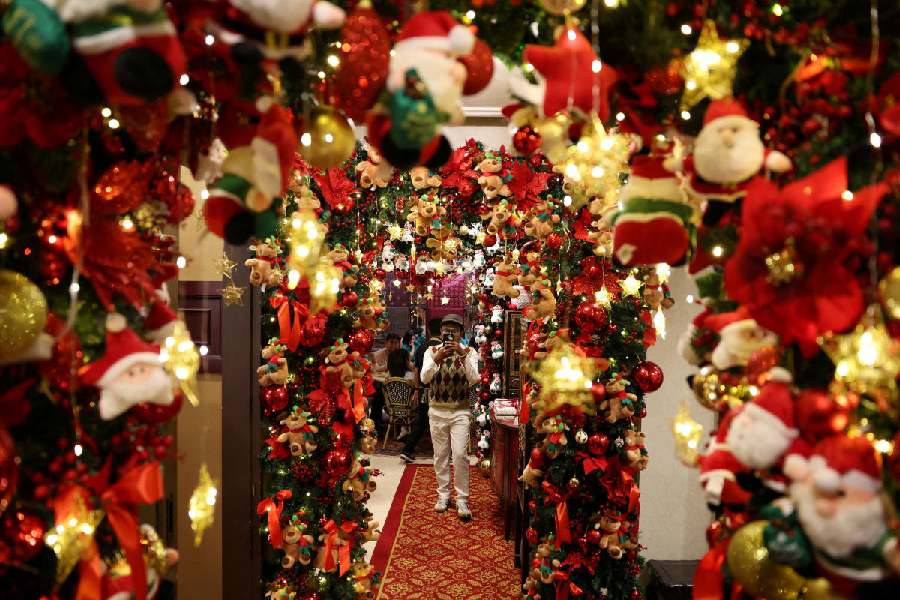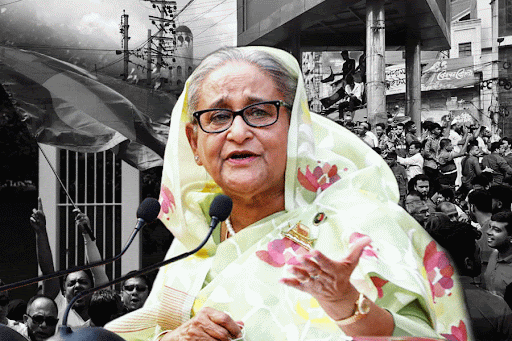A comment from a Union minister during a social media duel with a Congress MP has raised fears about the Centre shutting down yet another institution linked to the Nehru-Gandhi family, the Indira Gandhi Memorial.
Two historians told The Telegraph they opposed any such move, one of them describing the closure of such institutions as “recolonisation”.
Responding to Jairam Ramesh’s criticism of the architecture of the new Parliament House, Union minister Giriraj Singh wrote on the X platform last month: “I demand that the #DynasticDens all over India need to be assessed and rationalised.”
“For starters,” he added, “the 1, Safdarjung Road complex be immediately transferred back to the Government of India considering all Prime Ministers have their space at the PM Museum now.”
The address is that of the Indira Gandhi Memorial (IGM), the house where the former Prime Minister lived and was assassinated on October 31, 1984. Perhaps the most visited tourist attraction in Delhi, it displays the clothes worn by Indira and her successor and son Rajiv when they were killed. Rajiv was assassinated in 1991 at Sriperumbudur, Tamil Nadu, where a memorial now stands.
“This site is not just the place where she stayed, it is the place where she was assassinated.… The spot where she was assassinated is marked,” Mridula Mukherjee, historian and former director of the Nehru Memorial Museum and Library (NMML) that has now been renamed the Prime Ministers Museum and Library, told this newspaper.
“There is symbolism and sobriety, which is important. I am surprised that the present regime, which makes a big show of fighting the Khalistan movement, is talking about taking back the premises. This is a memorial to a person who sacrificed her life to counter the movement.… Today, they talk about breaking up Pakistan. The only PM to do so was Indira Gandhi in 1971.”
She added: “It is a small and beautiful memorial that is very popular, especially with visitors from the south. There are queues to pay homage to ‘Indira Amma’. Maybe that’s why they want it shut.”
This newspaper covered the opening of the IGM on May 27, 1985. The report by Manini Chatterjee in the following day’s edition described the “mummified elegance” of the place.
“On her table lay a pair of spectacles, which she must have laid aside before departing that morning, a diary and a bunch of odds and ends, aesthetically arranged with rubber bands hanging from a miniature reindeer’s antlers and Norwegian Viking boat overloaded with pins, clips, blotters and erasers,” the report said.
“The guides insist that they have been kept as they were on October 31, and not a thing had been touched. The fresh coat of whitewash and smell of fresh paint, however, lend an eerie air to the mummified elegance.
“It is in the lovingly maintained garden that Indira Gandhi really comes alive. In the middle of the lawn, where she played with her grandchildren as often as she could, is a chorizia tree, planted by her in 1966. A week before she died, the tree suddenly showed signs of disease and decay and she personally supervised its recovery. The tree, with a cracking trunk, still stands with a single Chinese lantern forlornly fluttering in the afternoon breeze, a memory of happier times.”
The PM Museum or Pradhanmantri Sangrahalaya was inaugurated last year on the Teen Murti compound. Teen Murti House, where Indira’s father Jawaharlal Nehru lived, had been converted into a standalone “house museum” for India’s first Prime Minister. It has been integrated with the new PM Museum built behind it.
The institution itself was renamed from NMML to Prime Ministers Museum and Library last month. Large obelisks have been erected at the gate, behind which security posts have been set up. This has changed the facade’s uncluttered and stately look.
“The PM Museum is a glaring aberration for a country that glorifies its democratic credentials,” historian and museum expert Sudeshna Guha, who teaches at Shiv Nadar University in Greater Noida, Uttar Pradesh, told this newspaper.
“Museums the world over today are active research spaces, as decolonisation demands increasing access to their collections and to the institutional space. Research appears to be glaringly lacking in the Pradhanmantri Sangrahalaya. The object labels do not really inform, most lack even the date of acquisition. The museum appears gimmicky, full of digital technologies, but they too lack content.”
She added: “Institutes are being brutally dismantled in the name of decolonisation. Changing the topography of Delhi by reclaiming memorial spaces is not decolonisation, but in fact recolonisation for political ends.… Erasing monuments from the landscape does not represent the practice of decolonisation, it affirms the imperialisms of the actions.”
Besides Nehru and Indira, the only other Prime Minister with a house museum in the capital is Lal Bahadur Shastri. The Indira and Shastri museums are managed by private trusts. This year, the Centre removed the IGM Trust, and two other trusts related to Nehru and Rajiv, from the list of institutions to which donations are exempt from taxation.
Guha added: “The Lal Bahadur Shastri Memorial was created at his house and, retrospectively, it appears to follow an earlier pattern: of the Nehru memorial at Teen Murti House. Shastri’s vision for the country comes through in this house museum.
“The Teen Murti, which the Pradhanmantri Sangrahalaya has attempted to completely overshadow, was instituted with a library too. It follows an older pattern of museum-building activity where a museum with a library and archives that relate to the collections constitutes a repository.
“The Varendra Research Museum and Library, instituted in 1910 in Rajshahi, Bangladesh, is one such example in South Asia.”
She added: “Indira Gandhi died at her residence, and this works more as a memorial…. These so-called ‘house museums’ of Shastri and (Indira) Gandhi inform (us) of some of the disparate histories of a postcolonial State, and its politics of decolonisation. There is no reason to dismantle them. In fact, it is a sheer waste of vast amounts of money to do so.”
Although opposed to the idea of former residences of Prime Ministers being converted to museums, architect and heritage conservationist A.G.K. Menon was critical of some of the Centre’s actions in this area.
The co-founder of the Indian National Trust for Art and Cultural Heritage told this newspaper: “House museums seem to be hero worship, which is unnecessary… the PM Museum should suffice.”
He added: “What has happened at Teen Murti is regrettable. The government is trying to leave its stamp on history. Of course, a PM Museum should exist, but it did not have to be built next to a heritage building…. The Central Vista project is also being done in the same manner.”
As part of the Central Vista Redevelopment Project, announced in 2019, Union government offices will move into new buildings along Kartavya Path. The National Museum will move from its current home on Janpath to the North Block and South Block, and will be called Yuge Yugeen Bharat.
Opposition MPs, academics and students have opposed the impending closure of National Museum and the shift of its vast collection to godowns before the new museum is opened in 2025.

